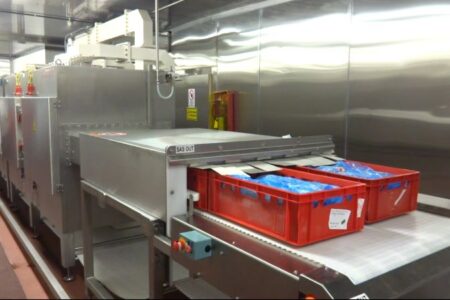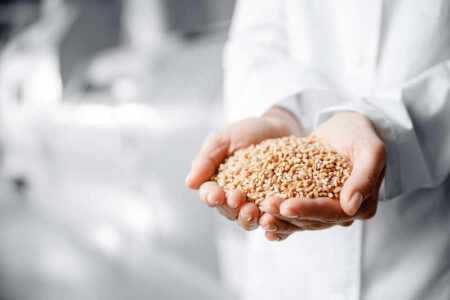Promotional activity

Packaging today needs to do so much more than just protect the contents inside. Not only does it have to stand out on the shelf, but it also needs to encourage consumer interaction and engagement in order to maintain brand loyalty well beyond the point of purchase.
On pack and in pack promotions are a cost effective way for manufacturers to maximise sales and grow market share. Whether it’s a voucher that offers a discount on the next purchase or a new flavour sample in a bag of sweets, value added premiums like inserts and labels facilitate direct interaction, deepen consumer engagement, encourage repeat purchase and provide numerous upsell and cross sell opportunities.
On pack (labelling)
On pack technologies employ an adhesive backed liner to affix a coupon or other promotional message to the outside of the product’s packaging. Suitable for a wide variety of marketing campaigns, on pack labels encourage multiple purchases, drive impulse purchases, promote other products, offer rebates and even enhance the brand’s key messages. With no repackaging required, they are also the ideal solution to revitalise the sales of a mature product or to build up excitement during a big sports event.
Onserts include an array of items, such as labels, coupons, booklets or bottle neck hangers, to name just a few. Coupons and instant redeemable coupons (IRC) are particularly popular. Buy one get one free coupons, discounts and instant wins also help move products off the shelf quickly, while on pack promotions that encourage consumers to register their details online for a chance to win a prize ensure further engagement and ongoing interaction even after the purchase has been completed.
In pack (inserting)
From scratch cards and collectables to dry or liquid filled sachet to toys, utensils and product samples, in pack promotions comprise a multitude of two- or three-dimensional items and offer manufacturers a great opportunity to encourage repeat purchase over a limited period of time. For example, collectible cards, figurines or game pieces may encourage fans to purchase and repurchase the product simply for the fun of collecting the items.
The inclusion of edible food inserts into primary packaging is also a great way to introduce new products and cross promote other products in the range. For example, by inserting liquid filled sachets such as BBQ sauces, salsa or guacamole into bags of potato chips, producers effectively introduce consumers to complimentary products. These types of promotions also help meet the increasing demand for greater convenience. The inclusions of a small pouch of salad dressing, croutons and grated cheese, for example, quickly turn any bag of pre-cut lettuce into a ready to eat meal, while an additional sachet of spicy seasoning in a bag of chips provides a quick flavour boost for the more adventurous consumer, offering the ultimate in convenience and flexibility.
Considerations for success
Once a manual and labour intensive process, today’s manufacturers have multiple automated inserting and labelling solutions available to them that are easily incorporated into their production line at a low cost and without any impact on the overall production line speeds.
The following considerations will help manufacturers update their packaging processes efficiently and affordably, while ensuring that each of their products meets the highest quality standards when it leaves the plant.
Type of promotion
There are a number of questions to ask before deciding on in pack and/or on pack promotional campaigns. For example, what is the size of the insert? Will it be a 2D or 3D item? Are there any special requirements for this to fit on/in existing product packaging?
For inserts, it’s vital that the promotional item can be added without affecting the product’s integrity. For instance, dispensing a 3D toy into a bag of potato chips may cause product breakage. Plant managers therefore need to explore the different options available to minimise damage to fragile products. One solution is to programme the inserter so the giveaway is dispensed just before the product.
Dispensing frequency is also an additional consideration, ie how often does the promotion need to be inserted? Some manufacturers might only want to include an item or add a label to every fifth bag to create excitement during a competition and provide consumers with an impression of exclusivity.
By integrating an inserter or labeller with an effective control system, plant managers can easily manage dispensing frequency according to the type of promotional campaign they intend to run.
Film selection
When it comes to promotional inserts, film selection is an additional consideration. Film strength, for instance, is a primary concern, since the perforation between each piece must be ideal to maximise the performance of the inserter. Likewise, if the film is too weak it might burst, allowing the insert to come into contact with the product. This can be particularly problematic with liquid filled sachets, which can compromise the quality of the end product.
To minimise these challenges, leading suppliers provide comprehensive evaluations of film type, so the over wrapper can meet optimal burst strengths and prevent leakage of food products into/out of the insert.
Packaging system
There are a wide array of packaging systems for manufacturers to choose from depending on the product being packaged, from horizontal and vertical form, fill and seal systems to cartoners and flow wrappers. Deciding where to place the inserting and labelling equipment is vital to ensure minimum downtime and maximum product throughput.
On horizontal form, fill and seal and flow wrapping lines, for example, the inserter is optimally positioned on the infeed conveyor, before the former. That way, the premium is inserted without causing any disruption to the product flow. On vertical form, fill and seal technology, the inserter can be installed at the scale or the former.
While both options integrate with the flow of production for optimum product transfer, integration at the scale can pose significant drawbacks. For instance, premiums can easily become jammed in the scale mechanisms, meaning manual intervention is often required to correct the problem. At the former, however, the insert is much closer to the product, reducing the risk of breakages and encouraging a more seamless insertion of the added value item.
Health and safety regulations
There are several hygienic requirements when incorporating both edible and non edible content into packaged food to maintain product safety. Once a manufacturer decides to promote a product with in pack and on pack promotions, there is a very important choice to be made: how to produce the premiums and assure compliance with strict regulations regarding direct food contact.
Awareness of regional safety laws and regulations is key for commercial success when exporting goods abroad. In Europe, for instance, the CE marking is required for many products sold in the EU. In the US, the use of promotional inserts is subject to Food and Drug Administration (FDA) guidelines, which include stringent legislation concerning printing materials and what types of substances (inks, varnishes and other coatings) may or may not come into contact with food. It’s therefore vital manufacturers have a thorough knowledge of the food product, packaging conditions and end-use requirements to which the insert is subjected, before incorporating it into their products.
A method commonly used for protecting inserts is plastic over wrapping. These barriers are often required to resist both abrasion (from the product) and bleed (from printed inserts) when added to wet or oily foods. However, in accordance with global regulations they must be derived from food grade plastics for safety assurance.
For edible inserts, there are additional safety considerations. Sachets or dips, for example, might have a different expiry date to the product in which they are inserted. This means they will require a separate label to the main product to inform consumers.
Driving sales
Promotional inserts and onserts are an easy and cost effective way to add considerable value to any product. By exceeding consumer expectations for convenience, value and flexibility, these solutions encourage repeat purchase, facilitate cross promotions, enhance brand visibility and loyalty and, ultimately, drive sales.



